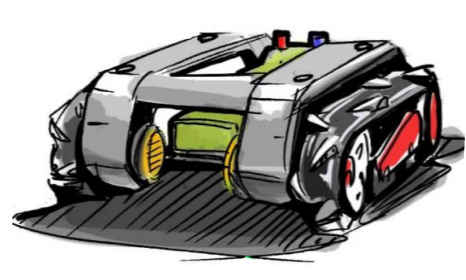The Ministry of Agriculture, Forestry and Fisheries will work on the development of an unmanned mowing robot in collaboration with Industrial Technology Research Institute, Yokohama City, Fukuoka Prefecture and others.
Unmanned Mowing Robots will be on sale in Japan soon, developed by public and private partnerships
Junko Nirmala for | RoboticsTomorrow
The Ministry of Agriculture, Forestry and Fisheries along with private partnerships will jointly develop low - cost unmanned mowing robots. The current mowing machine is a passenger type in which people drive, and the price per unit is about 1 million yen. By reducing this to only necessary functions, by making it unmanned, it will be drastically reduced to 500,000 yen.

The Ministry of Agriculture, Forestry and Fisheries will work on the development of an unmanned mowing robot in collaboration with Industrial Technology Research Institute, Yokohama City, Fukuoka Prefecture and others.
Agriculture in the mountainous area is a heavy burden on grass cutting work. Unlike flat paddy fields, there are many slopes, so it is difficult to introduce a robot and there are cases where it is done manually. In passenger-type mowers, there is also a safety problem that can lead to a serious accident when falling down. Also Japan agriculture faces extreme labour shortage not only for current productions but also to scale up the agricultural productivity.
Based on a passenger type mowing machine, making light power and miniaturize by changing the power from engine type to battery type will enable to work even on steep slopes.
According to the estimation by the Ministry of Agriculture and Forestry, in the case of agricultural corporations in middle mountainous areas with a paddy field area of 150 thousand square meters, can reduce the mowing operation time from 225 hours to 75 hours, which is conventional, by less than half, by using unmanned robots. This will also bring huge cost saving along with productivity.
In Japan agriculture, forestry and fisheries and food industry fields, labor shortage is a serious problem due to declining number of players and progress of aging. As there are still many tasks that depend on human handling and work that can not be done only by experienced and skilled persons.
Many organizations have come forward implementing variety of solutions based on ICT and Robots, For instance; One company has introduced GPS automatic traveling system etc for truck rowing driving, multiple running, automatic driving etc of the machine. This solution further will help in manned tilling ground and sowing fertilizer unattended/ unmanned.
Another solution is been introduced by NTT company called paddy watch; To realize high yield and high quality production.Fine-grained based on sensing technology and past data. The water level, water temperature, temperature and humidity of the field are set at various sensor data. Automatically measure and send data to tablet or smart phone, The acquired data is accumulated on the cloud and Can be used anywhere, anytime. There are also large-scale farmers that manage hundreds of fields Therefore, it is possible to drastically save labor in the field roaming work, If the water level drops, low temperature, high temperature A warning is sent to the mart phone to respond promptly.
There are plenty of drones based solutions for agriculture; ICT, IOT, Big data and Analytic for agriculture filed have been increased in recent years; with all soil sensors to environment sensors, machine data and each paddy grain data are seem to be next move for big companies in this arena. The Ministry of Agriculture, Forestry and Fisheries in Japan is strong supporting the farmers to embrace new technologies.
Junko Nirmala is a Tokyo resident with 17 years of Professional experience in Technology and business consulting services. Her diverse background includes Advisory assignments completed for 70 plus Japanese companies on Globalization, Founder of startup company in Green Technology, conducting Training and seminars for Global Workforce in Japan and so on. Currently she is involved in Promoting Japan Robots Industry. She has authored 3 books and consistently writes for newspapers and magazines in Japan.
The content & opinions in this article are the author’s and do not necessarily represent the views of RoboticsTomorrow
Comments (0)
This post does not have any comments. Be the first to leave a comment below.
Featured Product

